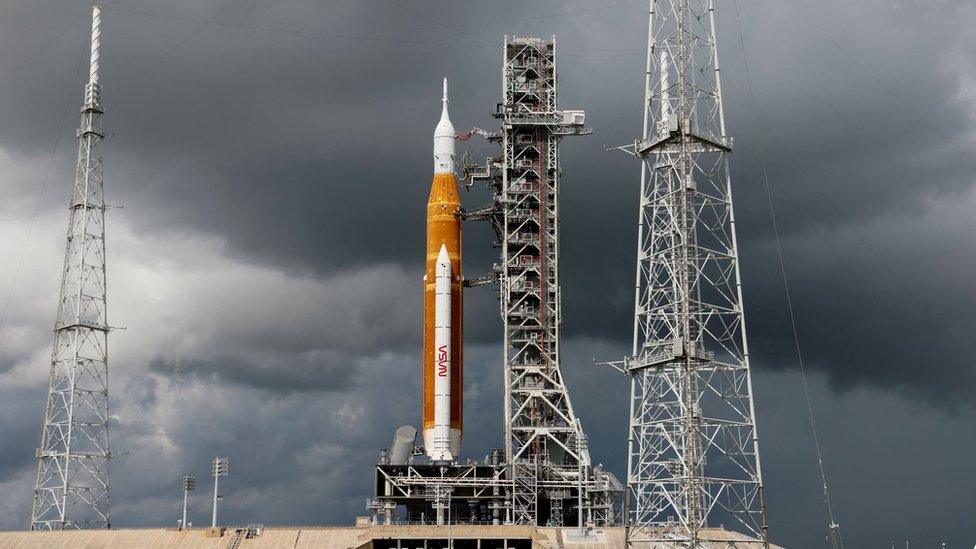Hurricane Ian: Cuba left without power as storm approaches Florida
- Published
- comments
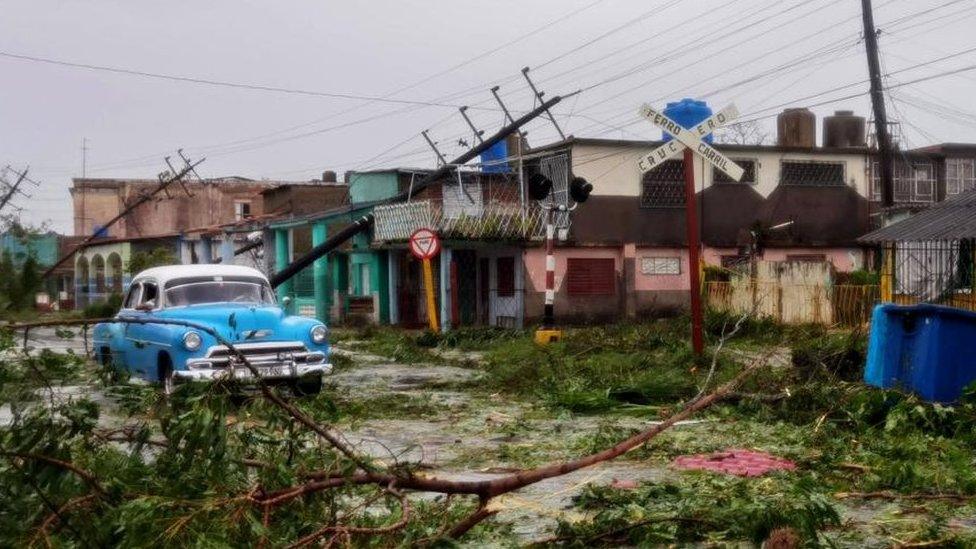
The island of Cuba has been left completely without power after Hurricane Ian hit the western end of the country.
Around 11 million people have been affected by the blackouts after it brought winds of up to 195km/h (120mph).
Officials say the electrical system has totally collapsed since the category three hurricane hit the island on Tuesday.
The hurricane is expected to cross over to Florida in the coming days, and more than 2.5 million people there have been told to leave their homes and stock up on essential supplies.
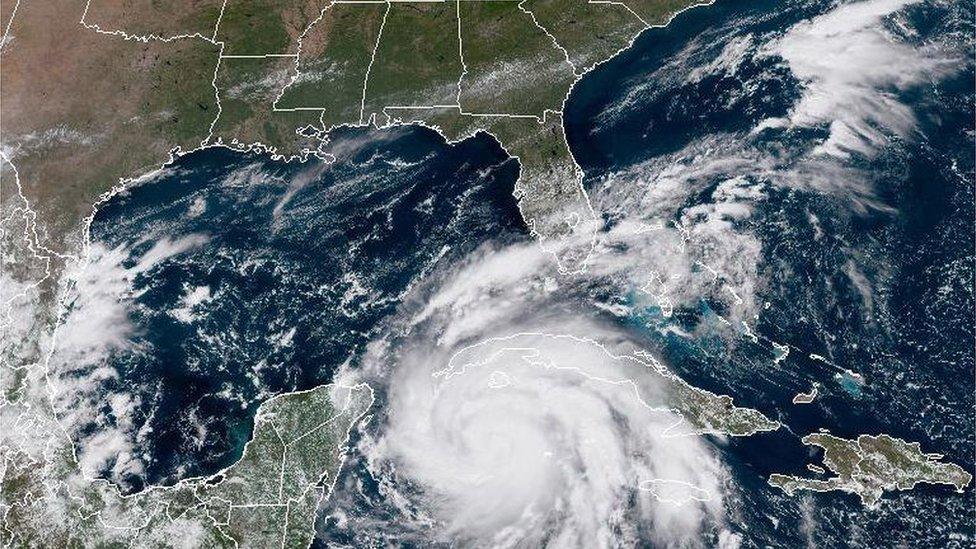
A satellite image of the storm
Cuba is a country in the western West Indies, between the Caribbean Sea and the Gulf of Mexico south of Florida and The Bahamas, north of Jamaica and the Cayman Islands.
It's been reported that 100% of the electrical circuits in Cuba were out of service following the hurricane, and with the country's main power plant totally shutdown, there is no way to generate electricity anywhere on the island.
Hurricanes are tropical storms that form over the North Atlantic Ocean and Northeast Pacific.
Forecasters had warned that some regions of Cuba could see up to 30cm (12in) of rain under Hurricane Ian, with some people describing having to hold the roof of their house down with a rope to keep it from flying away.
There's no sign of the strong winds dying down any time soon.
The US National Hurricane Centre (NHC) says that Ian could be a category four hurricane by the time it strikes Florida's western coast, with wind speeds topping 130mph.
A category 4 storm can cause severe damage to well-constructed homes, including damaging most of the roof and exterior walls.
On Tuesday night the storm was passing over the Florida Keys, a string of islands off the southern tip of the state, and is predicted to hit land on Florida's west coast late on Wednesday.
Florida and its neighbouring state, Georgia, have both declared a state of emergency, although Florida's Governor is urging people to"remain calm" and has activated 5,000 military troops to help with relief efforts.
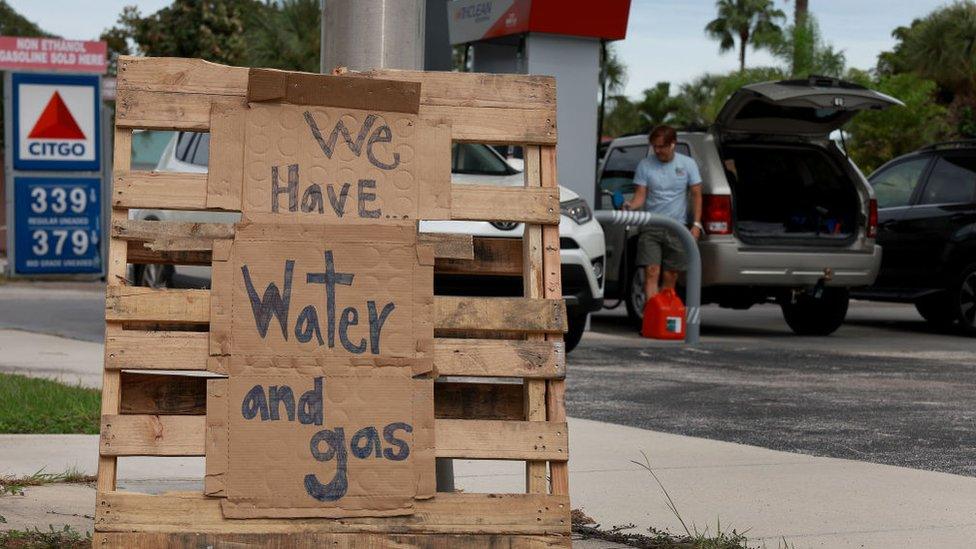
Residents are buying supplies as they brace for the storm
Weather forecasters are worried about the risk of tidal surges and serious flooding in the Florida peninsula and Florida Keys as the hurricane approaches.
It's been predicted it is likely to lose speed as it nears Florida, which could make the storm's effects become more long lasting and result in up to 20in (1.6ft) of rain in some areas.
US President Joe Biden has been working closely with the governor of Florida to make plans.
The White House has made its own emergency declaration, with the President saying he will help co-ordinate disaster relief and assistance for those who need it.
- Published23 October 2015
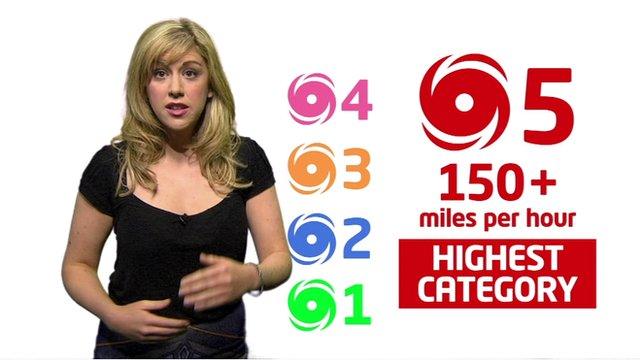
- Published25 September 2022
